Introduction
In today’s fast-paced business environment, the quest for operational efficiency is relentless, and Robotic Process Automation (RPA) has emerged as a powerful tool to meet this demand. By automating routine and repetitive tasks, RPA not only boosts productivity and accuracy but also offers significant cost savings and enhances overall business performance. Companies like St. James Winery have already reaped the benefits of automation, achieving higher production speeds and better margins.
This article explores the multifaceted advantages of RPA, from improved accuracy and enhanced customer experience to scalability and employee satisfaction. Discover how integrating RPA can transform operations, ensuring businesses stay competitive and responsive to market fluctuations while fostering a more engaging work environment for employees.
Increased Productivity
Robotic Process Automation (RPA) significantly enhances productivity by automating repetitive tasks, enabling workers to concentrate on more strategic initiatives. For instance, St. James Winery, a leading wine producer in the U.S., adopted mechanization due to increased growth and a lack of available labor, resulting in higher margins. RPA can handle large volumes of data efficiently and accurately, eliminating the need for overtime pay or temporary staff during peak seasons. The use of RPA not only boosts productivity but also improves accuracy by reducing human errors in tasks such as data entry and report generation. This substitution reduces costs and creates a positive productivity effect. Furthermore, workers who are motivated to move up in their careers and solve complex problems are more likely to see new technologies as beneficial. For example, the Omron TM Series Collaborative Robot showcases how human-robot collaboration can revolutionize production lines, enhancing flexibility and efficiency. By automating routine tasks, RPA empowers employees to drive higher output within the organization.
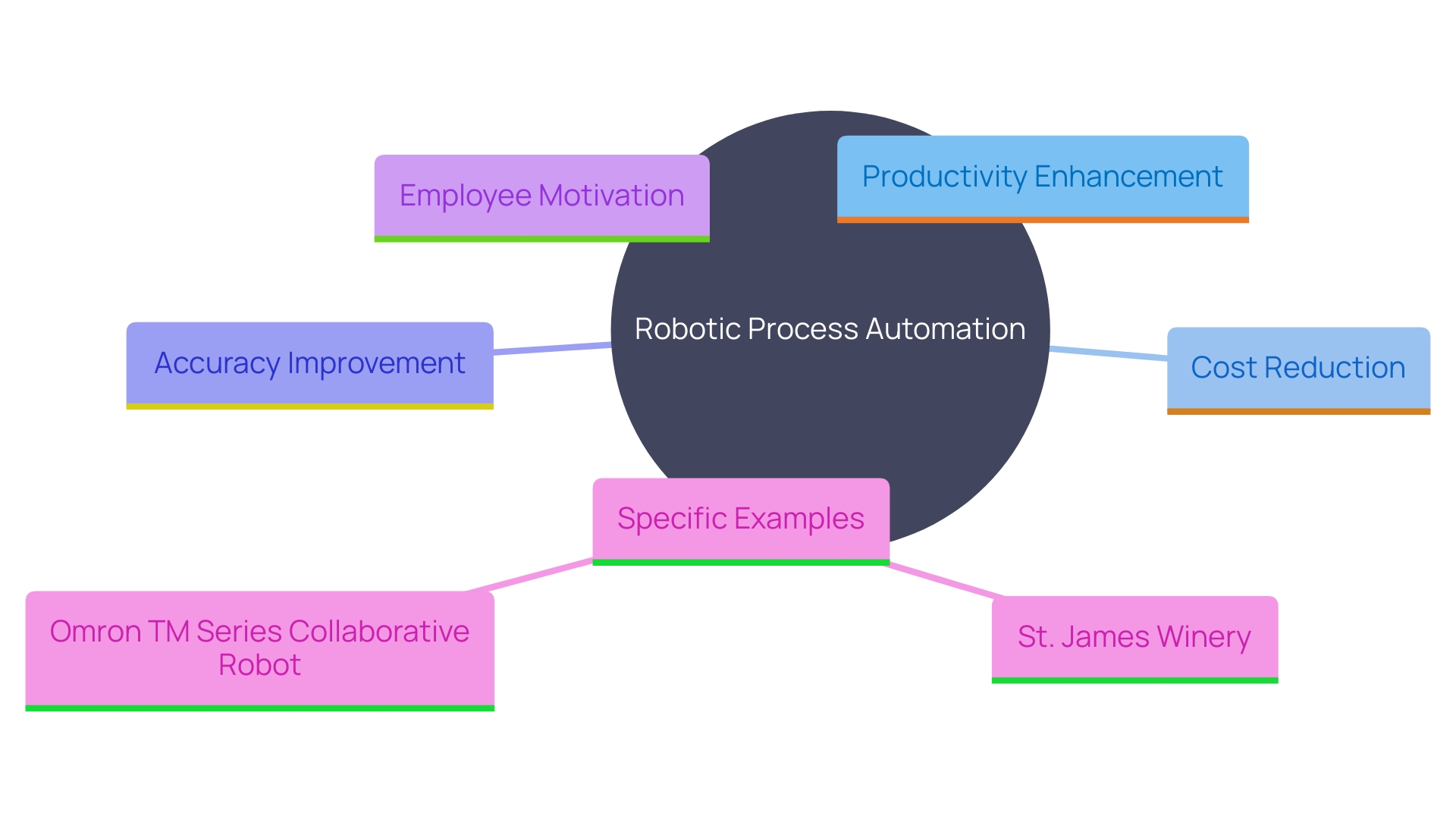
Cost Savings
Implementing RPA can lead to significant cost savings by reducing reliance on manual labor and minimizing errors. For instance, St. James Winery in Missouri, a prominent wine manufacturer, has attained increased production rates and improved profit margins through mechanization. They measure ROI in terms of labor per case and have already seen substantial benefits. As companies allocate resources more efficiently, they can enhance profitability and stay competitive in the market. The global robot operating systems market is anticipated to reach $1.8 billion by 2032, growing at a CAGR of 12.9%. This surge reflects the growing adoption of mechanization technologies across various industries. Moreover, embracing Robots-as-a-Service (RaaS) agreements can provide adaptable, economical solutions for processes, where organizations only pay for what they use, including deployment, integration, and maintenance expenses. This model allows companies to optimize operational efficiency without the burden of significant capital investments.
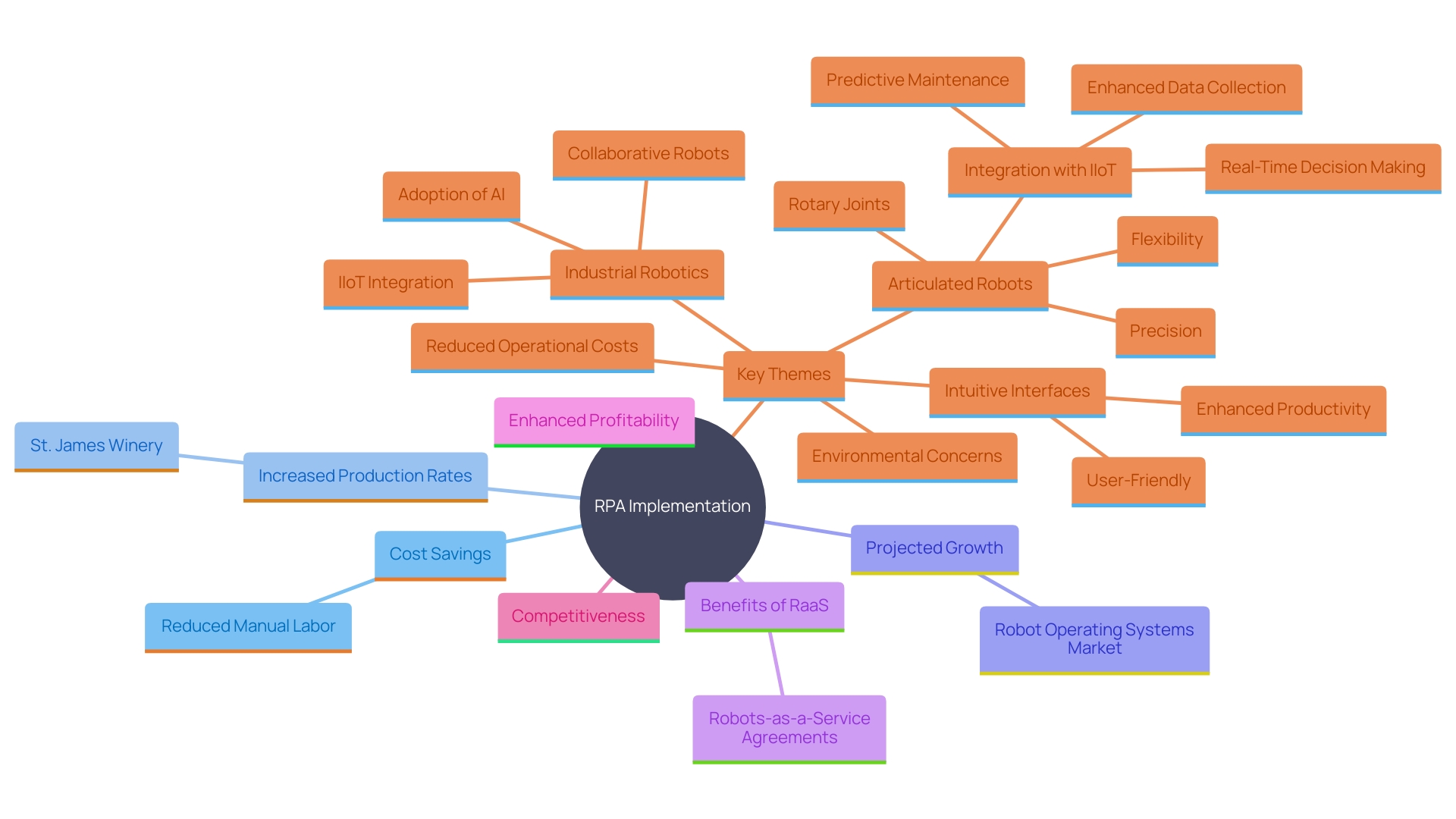
Improved Accuracy and Quality
Robotic Process Automation (RPA) enhances task accuracy, significantly reducing human error. For instance, St. James Winery implemented automation to address labor shortages and increased production demands. As a result, they achieved higher production speeds and better margins, demonstrating the reliability and effectiveness of RPA. Consistent quality in processes not only boosts product and service reliability but also supports overarching organizational goals such as cost reduction, efficiency improvement, and competitive advantage. By 2026, the Industrial Automation Services Market is expected to grow to $264.69 billion, emphasizing the strategic importance of adopting these technologies.
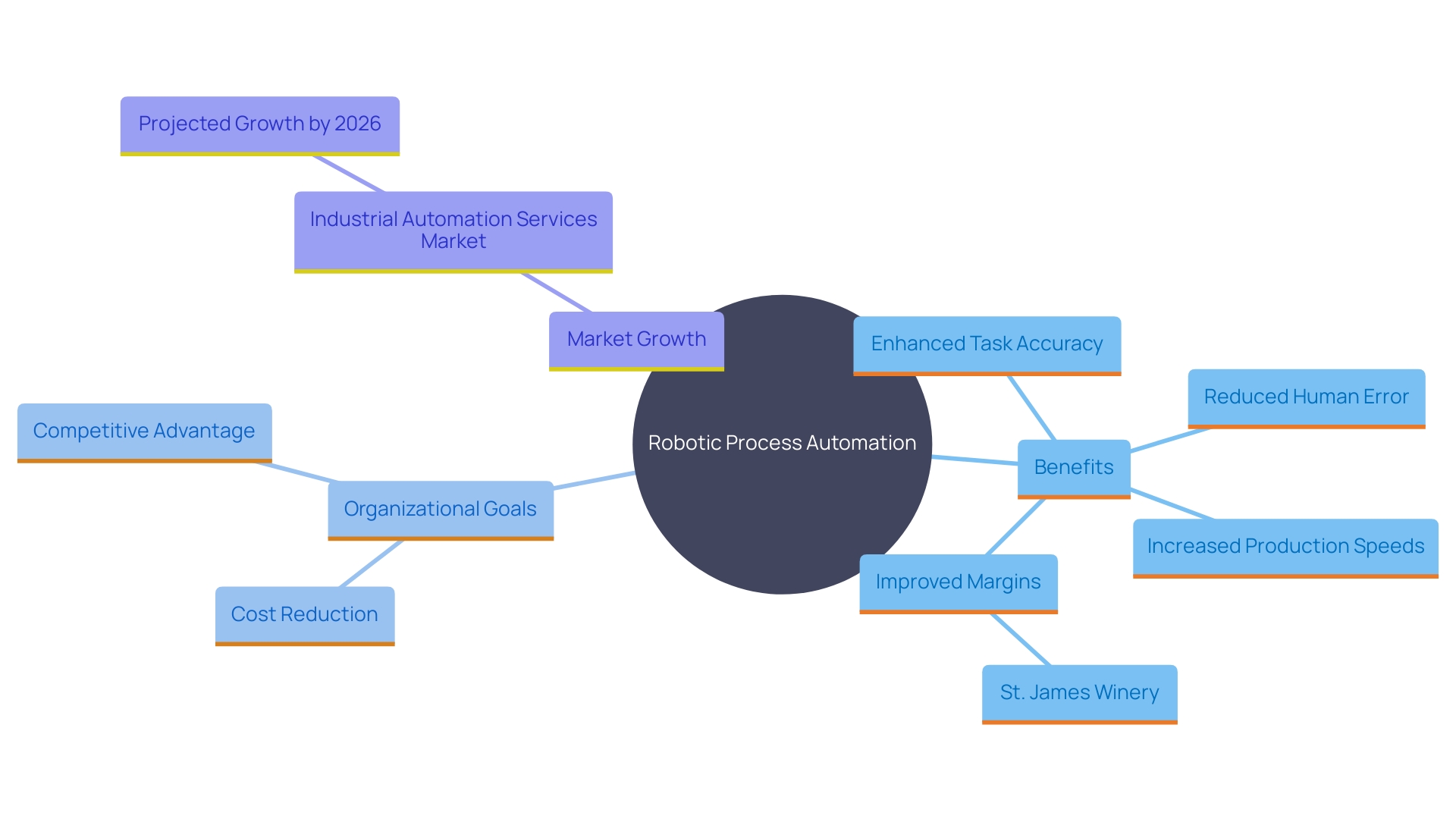
Enhanced Customer Experience
By utilizing Robotic Process Automation (RPA) to handle routine tasks, organizations can significantly enhance their responsiveness to customer inquiries. This not only accelerates response times but also improves the accuracy of the information provided. Such efficiency is crucial, given that 88% of customers value excellent service as much as a company’s products or services, according to Salesforce’s State of the Connected Customer report. Furthermore, RPA’s ability to operate 24/7 without errors ensures that customer interactions are consistent and reliable, which is vital for maintaining high customer satisfaction and loyalty. Businesses such as St. James Winery have experienced directly the advantages of mechanization, attaining increased production rates and improved margins by incorporating RPA into their processes. This demonstrates that investing in technology not only meets current demands but also positions enterprises for future growth and efficiency.
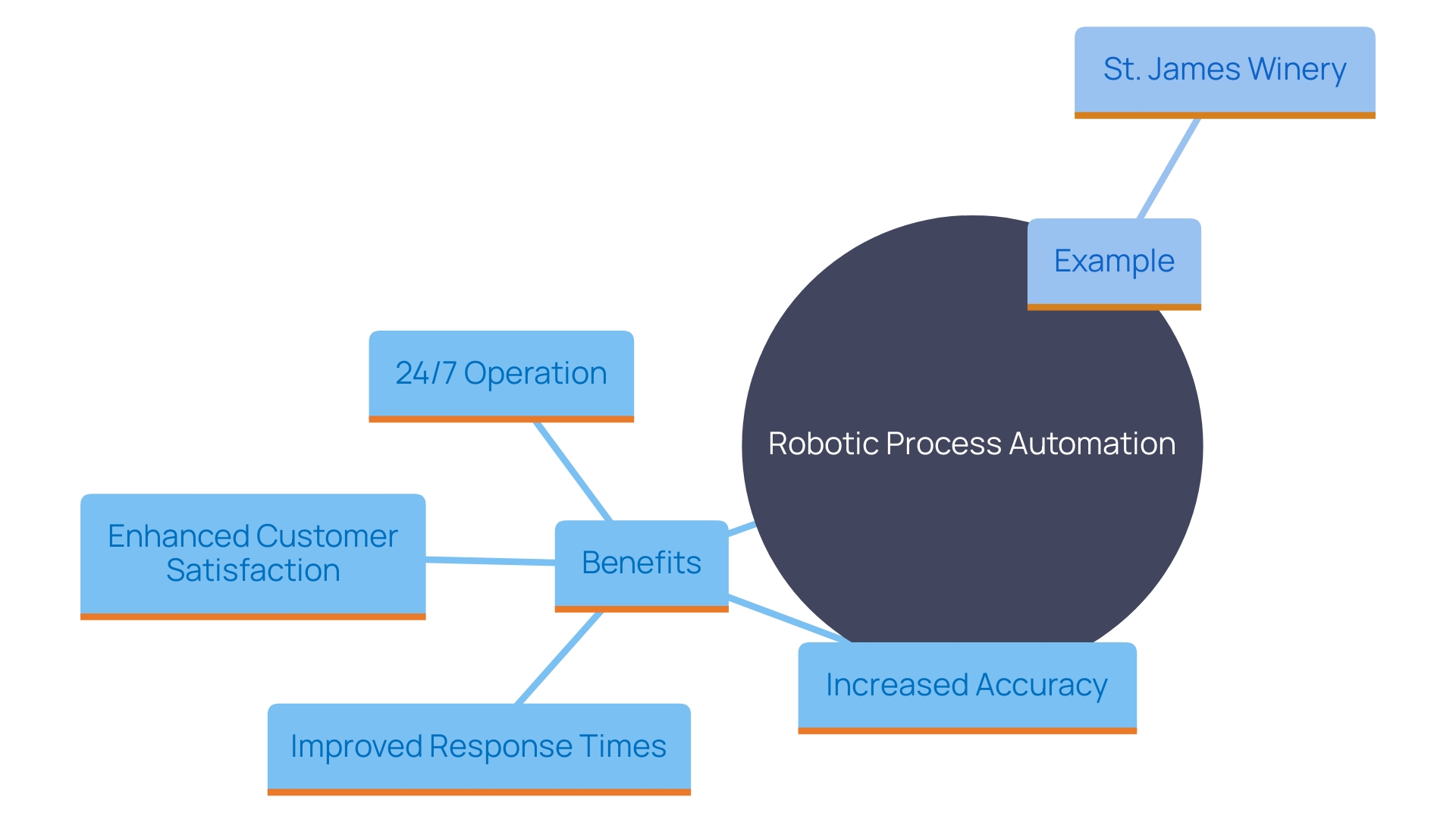
Scalability and Flexibility
Robotic Process Automation (RPA) solutions offer unparalleled scalability, enabling organizations to swiftly adapt their automation processes to meet varying demands. This adaptability is crucial for supporting organizational growth and responding to market fluctuations. For instance, the finance department at Mass General Brigham hospital in Boston faced significant inefficiencies in tracking healthcare providers. By implementing RPA, they automated data collection and organization, which streamlined their workflow and highlighted actionable insights for the team. Such flexibility not only enhances efficiency but also ensures that businesses remain competitive amidst economic challenges and shifting market conditions.
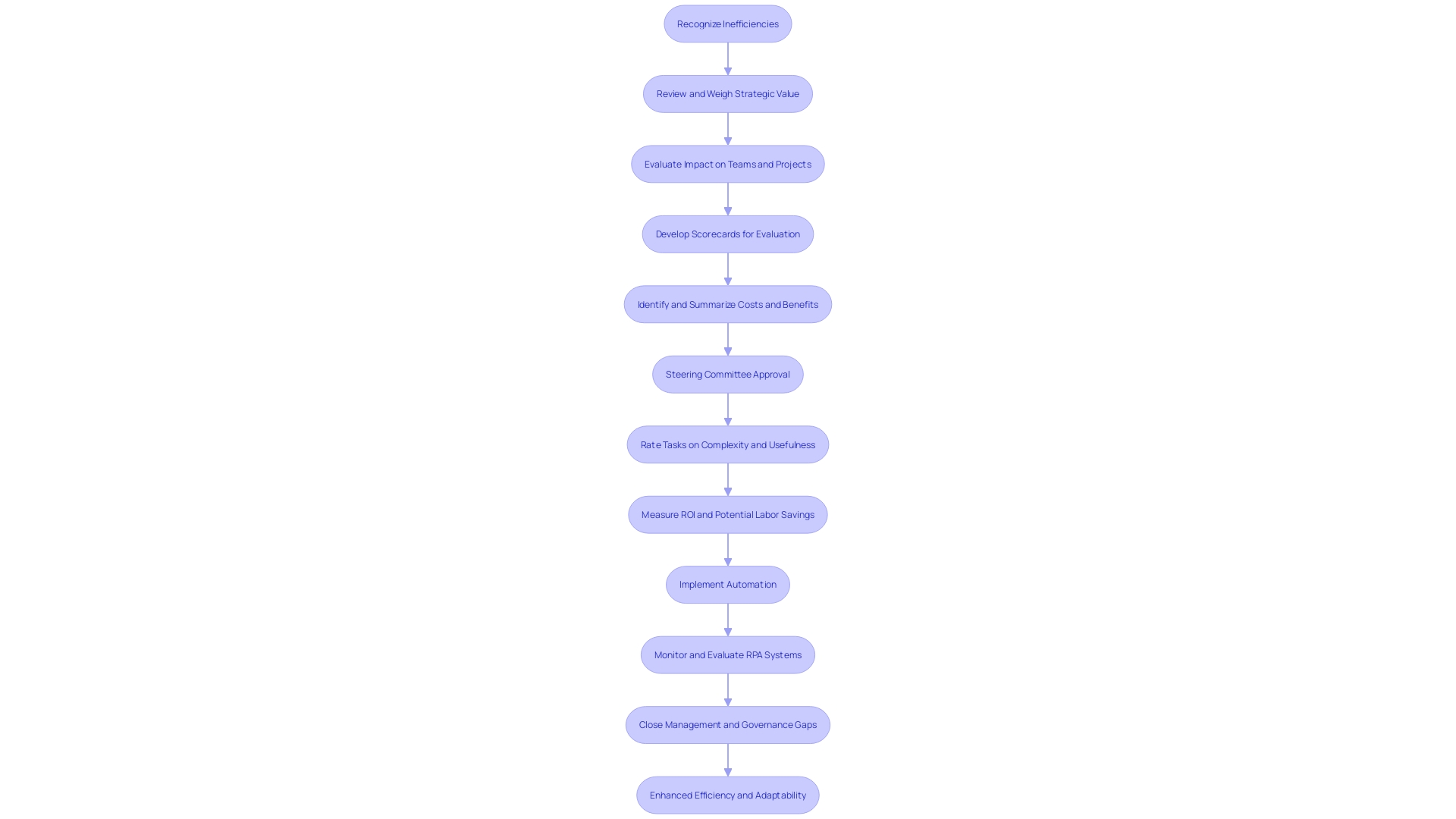
Employee Satisfaction and Engagement
By liberating staff from tedious duties, Robotic Process Automation (RPA) promotes a more stimulating work atmosphere. This shift allows staff to concentrate on innovative and significant tasks, greatly improving their job satisfaction and retention. For instance, Delivery Hero, a global delivery platform with over 53,000 staff members, faced the challenge of workers getting locked out of their accounts. Each recovery process took an average of 35 minutes, leading to significant downtime. By implementing RPA, Delivery Hero’s IT service delivery team, led by Dennis Zahrt, removed this bottleneck, allowing staff to remain productive and engaged.
Moreover, a global report by Quinyx highlights that 60% of shipping and distribution employees believe that future technologies will improve job quality, allowing them to complete tasks more efficiently. This sentiment is echoed by Llinos Roberts, product lead at Stena Line, who emphasizes the company’s commitment to leveraging technology to enhance job satisfaction. In contrast, concerns about job displacement due to mechanization persist, as highlighted by studies indicating that frequent interaction with advanced technologies like AI and robotics can negatively impact workers’ mental health and job satisfaction.
However, the positive impact of RPA on job satisfaction is clear. Employees who work on complex problems and feel valued by their employers are more likely to view new technologies favorably. In the United States, for instance, mechanization has been found to reduce workplace injuries by about 16%, and in Germany, it lowers the physical intensity of work by 4% and the risk of disability by 5%. These improvements contribute to a healthier and more satisfying work environment, ultimately benefiting both employees and the organization.
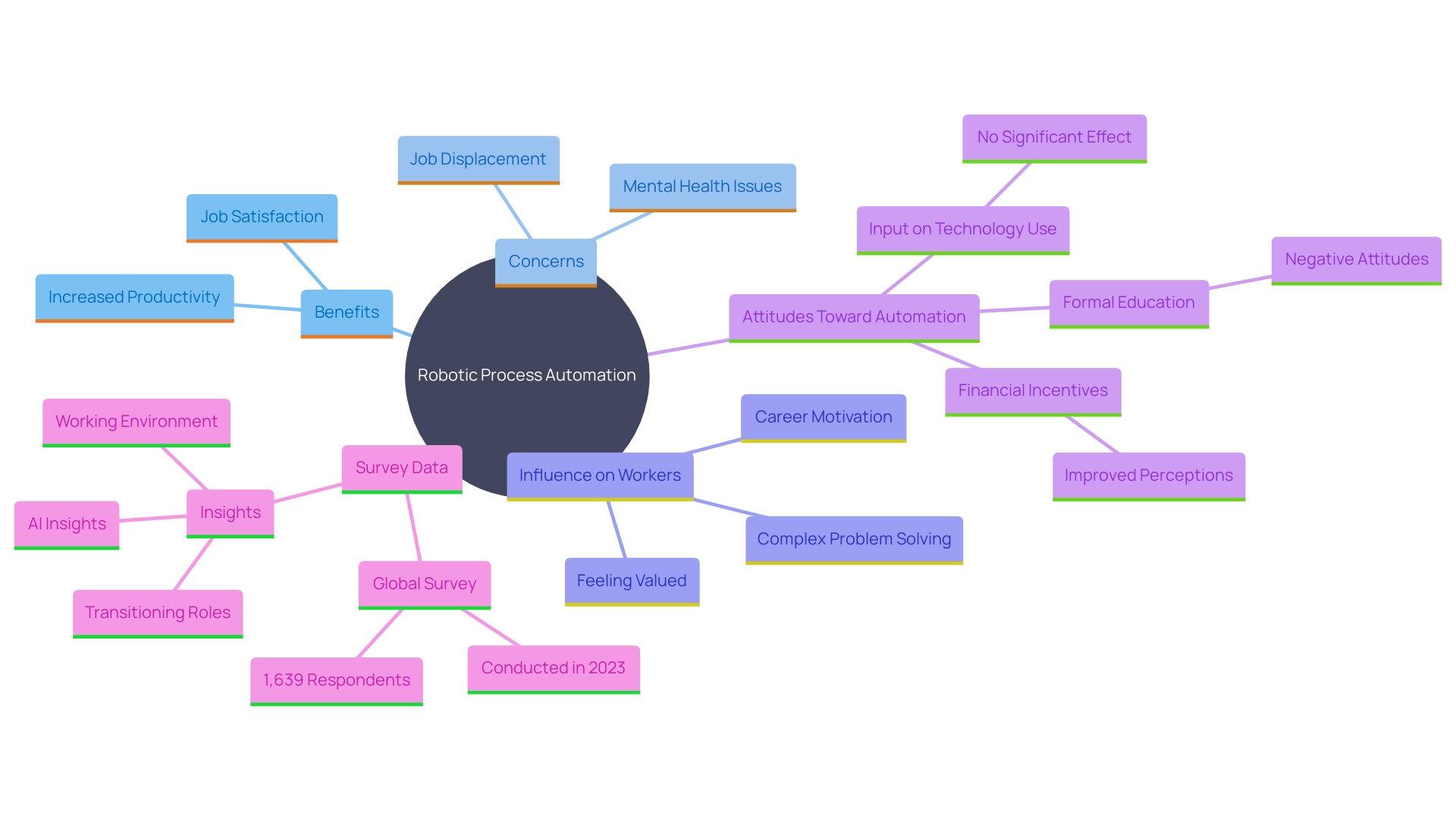
Faster Return on Investment (ROI)
Implementing RPA often leads to swift ROI, as enterprises promptly enjoy the monetary advantages of mechanization. For instance, companies like St. James have achieved higher production speeds and better margins, measuring ROI in terms of labor per case. By incorporating additional mechanization, St. James is poised to further enhance production efficiency and stay competitive in the face of rising demands. As per a Forrester study, 24% of companies faced a 16% to 20% decrease in time to market for new products because of mechanization, while 27% observed enhancements between 11% and 15%. These enhancements not only boost agility but also increase market competitiveness. As Jeff Burnstein, president of A3, noted, the drive for operational efficiency continues to fuel demand for robotics, even amidst economic challenges. This trend highlights the essential function of mechanization in sustaining global competitiveness and enhancing operational processes.
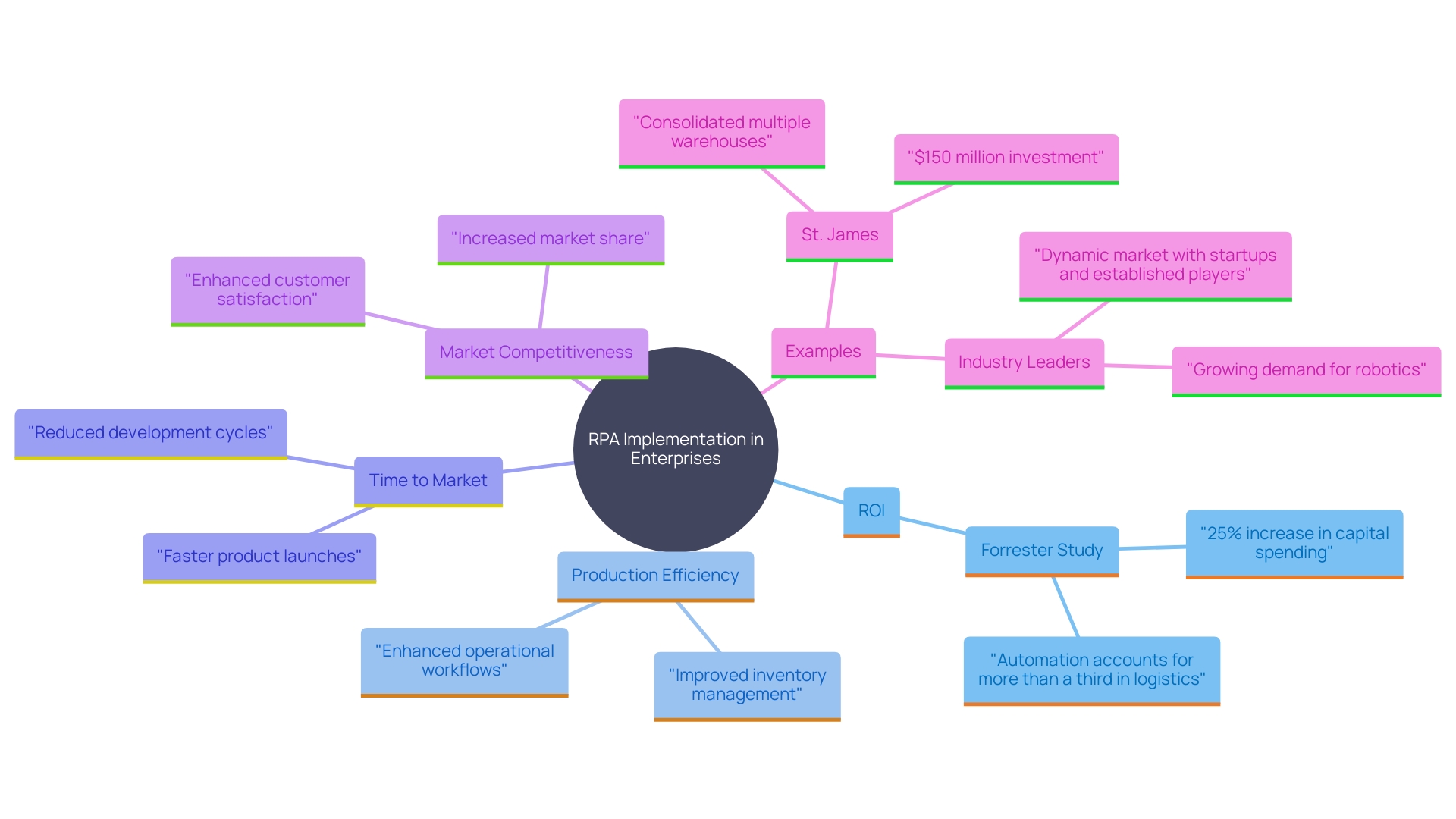
Better Compliance and Regulatory Adherence
Robotic Process Automation (RPA) helps organizations achieve stringent compliance standards by automating processes to ensure consistent and correct execution. This automation also generates detailed audit trails, simplifying regulatory adherence. For instance, M&T Bank, a longstanding and prominent U.S. commercial bank, leverages RPA to maintain compliance with the highest security standards and regulatory requirements, protecting sensitive data and transactions. In another example, Ryanair has standardized its Disaster Recovery process using RPA, eliminating human error and ensuring swift compliance with regulations like the Sarbanes-Oxley Act. By automating such essential processes, organizations can avoid expensive compliance problems and concentrate on their primary operations.
Improved Analytics and Decision-Making
Robotic Process Automation (RPA) enhances data collection and analysis, allowing businesses to make data-driven decisions with greater precision. By automating repetitive tasks, RPA enables the collection of vast amounts of data quickly and accurately. This data can be transformed into actionable insights, leading to more informed decision-making processes. For instance, ABB’s implementation of YuMi® cobots in Electrolux Group’s refrigerator production line significantly improved gas leak detection accuracy and enhanced worker safety by automating 100% of the detection operations. Consequently, employees were redeployed to more valuable roles, showcasing how automation can optimize both productivity and safety. Additionally, leveraging RPA can result in substantial cost savings and efficiency gains. Companies utilizing Dataiku reported an 80% reduction in time spent on manual processes and a three-year ROI of 413%, emphasizing the financial advantages of incorporating RPA into operational activities. As financial institutions harness data analytics for risk management and strategic planning, the ability to transform raw data into actionable insights becomes indispensable for maintaining a competitive edge in today’s data-driven environment.
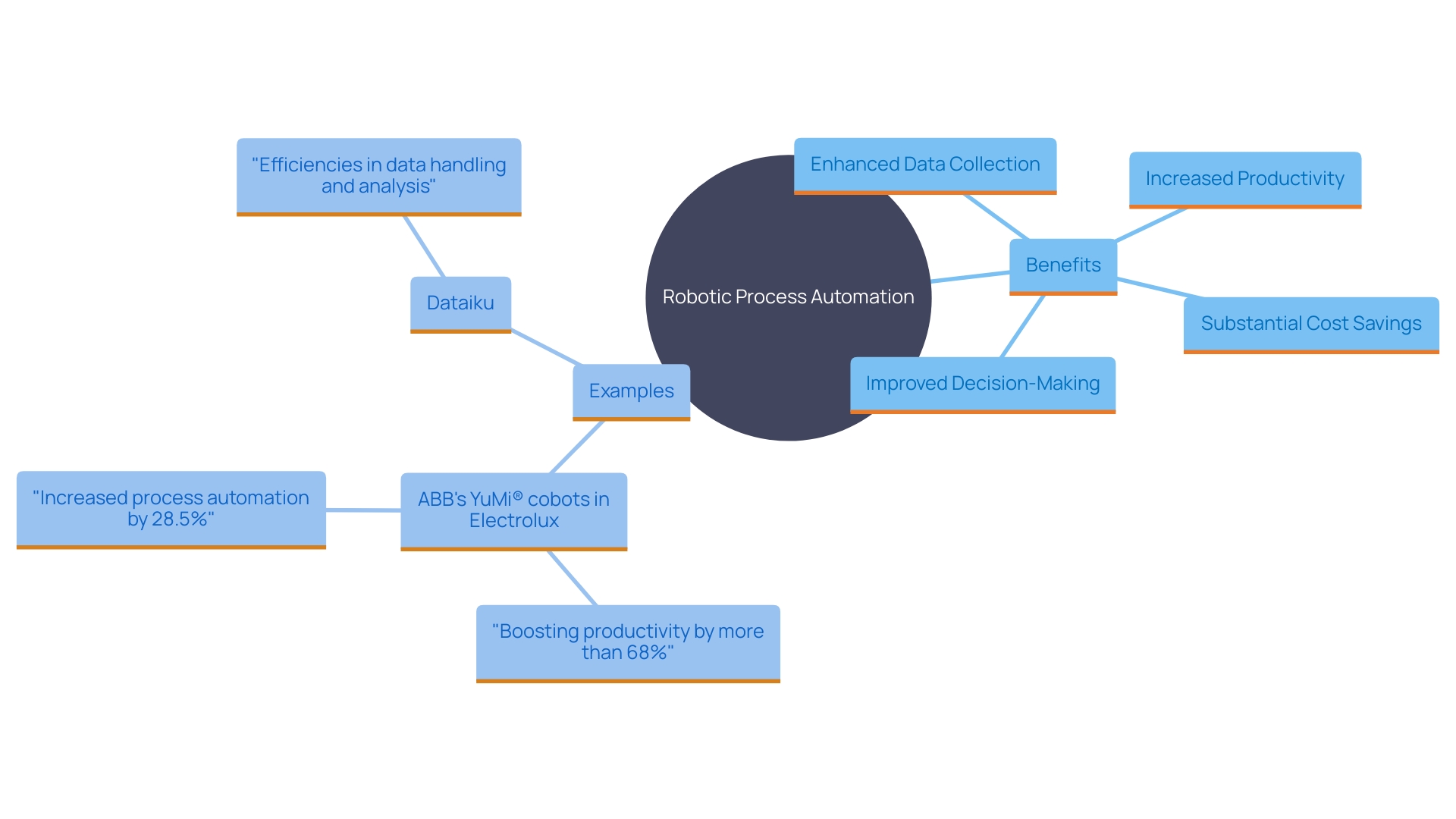
Competitive Advantage
By adopting RPA, businesses can gain a significant competitive edge. Enhanced efficiency and productivity not only allow organizations to innovate faster but also respond more effectively to market demands. For instance, St. James Winery has experienced significant enhancements in production speeds and profit margins by incorporating mechanization, measuring ROI in terms of labor per case. Looking ahead, they plan to expand their automation efforts to keep up with increasing demands.
Moreover, a study from SS&C Blue Prism and Forrester Consulting highlighted that Intelligent Automation (IA) technologies have transitioned from operational to highly strategic tools. Over three years, the composite organization interviewed saw gains in productivity, compliance cost avoidance, and employee experience, yielding an impressive net present value of $53.4 million per customer.
These real-world examples underscore the transformative potential of RPA, as it drives economic growth and fosters a more sustainable future. As businesses continue to embrace these technologies, the flexibility, scalability, and efficiency offered by mobile robots further enhance operational capabilities across various industries.
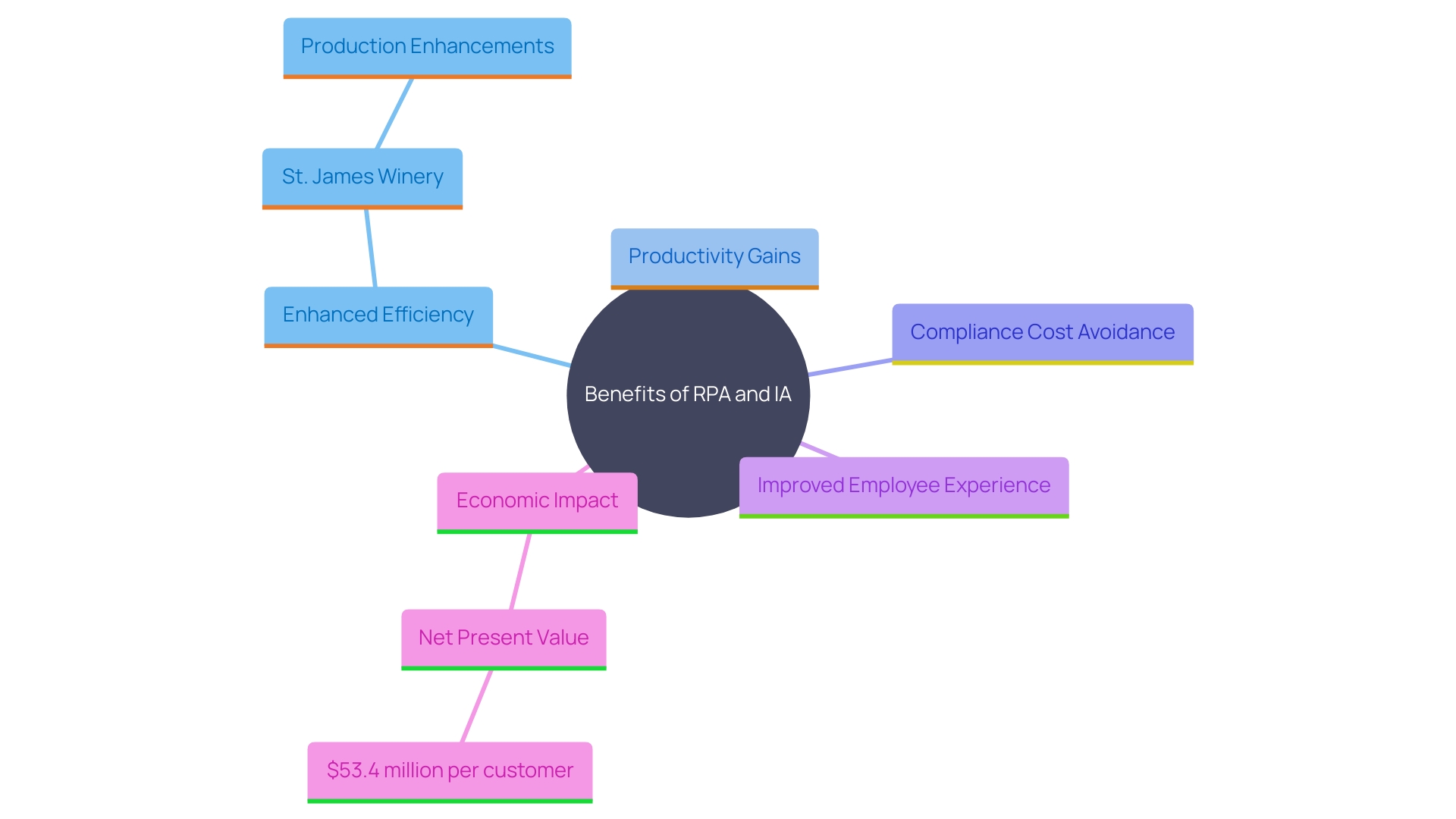
Conclusion
The integration of Robotic Process Automation (RPA) within organizations presents a multitude of advantages that can significantly enhance operational efficiency. By automating repetitive tasks, RPA not only increases productivity but also reduces human error, leading to improved accuracy and quality in processes. Companies like St. James Winery exemplify the transformative effects of RPA, achieving higher production speeds and better margins while allowing employees to focus on strategic initiatives rather than mundane tasks.
Cost savings emerge as a critical benefit, with RPA minimizing reliance on manual labor and enabling businesses to allocate resources more effectively. The adoption of flexible payment models, such as Robots-as-a-Service (RaaS), further enhances the financial viability of automation. As organizations streamline their operations and improve customer experience through faster and more accurate responses, they position themselves for sustained growth and competitiveness in the market.
Moreover, RPA fosters a more engaged workforce by freeing employees from repetitive tasks, allowing them to concentrate on creative and meaningful work. This not only enhances job satisfaction but also contributes to employee retention. With rapid ROI and improved compliance through standardized processes, RPA empowers organizations to make data-driven decisions, ultimately leading to a competitive advantage.
As businesses continue to navigate the complexities of today’s economic landscape, embracing RPA is not just a strategic necessity but a pathway to innovation and operational excellence. The future belongs to those who leverage automation to enhance efficiency, responsiveness, and overall performance, ensuring they remain at the forefront of their industries.

